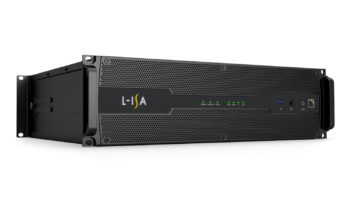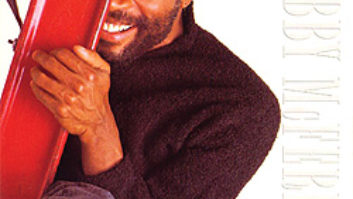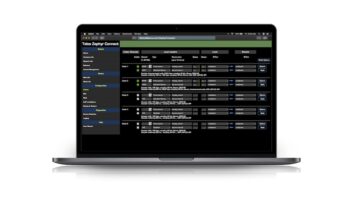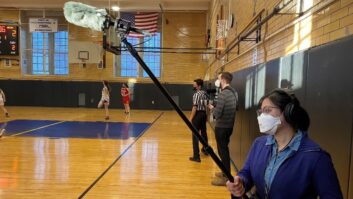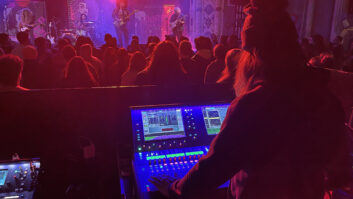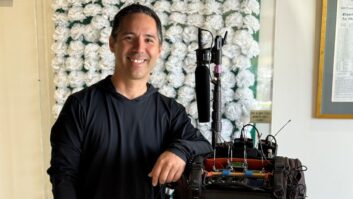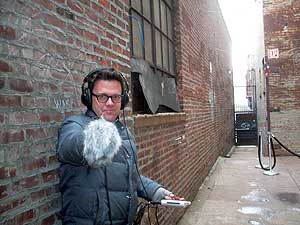
hris Jones on the hunt for the ultimate sound design ambiences.
Remote recording specialists are regularly called on to record performances and other events, ensuring that those who couldn’t be there live and in person can hear them later. But for sound designers like Chris Jones (www.circa70.org), there’s a whole different reason to set mics up outside: It’s not to purely document sonic experiences, but rather to subtly incorporate them into the ambiences he makes.
“A field recording can be a great place to start when creating material,” says the Brooklyn, N.Y.-based Jones. “I definitely come from that 20th-century electro-acoustic philosophy that acoustic recordings are spectrally the richest, and therefore better sources to process.
“I would also say it’s fun to go outside and find things to hit. It creates a different yet simpler challenge as an engineer: get it clean and don’t distort.”
Jones is on the lookout for sounds that he will later blend with other synthetic samples, use as audio triggers for sound-mangling purposes in the programs AudioMulch, Metasynth and Jeskola Buzz, fashion into impulse responses for convolution reverbs, or use in other fiendish ways. Traveling with a Zoom H4 recorder recording at 96 kHz/24 bits, Jones depends equally on his gear and experience, recommending the following essential items: a tackle box, a stereo microphone, a shotgun mic, a 12-foot telescoping boom, wind protection, closed-back headphones, tons of batteries, SD cards for storage, mallets, baseball bats, and hammers to strike/play with, and — somewhat surprisingly — a contact mic.
“Think about it: A contact mic has no ambient sound,” Jones notes, specifically recommending the designs of Jeff Thompson (www.contactmics.com). “Contact mics are great for field recording because they work on vibration only and can be like a DI for your field recordings. It can function the same way in the mix, too, filling in gaps and pulling the whole sound together. Contact mics are magic.”
When Jones leaves his personal studio in Brooklyn’s 3rd Ward art space, he may head to the roof, go just around the corner, drive upstate, or thumb a ride to Bora Bora. “There are two types of field recording in my mind,” he says. “One where you’re going out and recording whatever you hear as it moves you. The other is where you get an opportunity to record something specific and awesome.
“I like going out just to record transients. One recording I use all the time is this old window in a stairwell. It’s just me opening rusty hinges and banging it with its chain. Later I might chop out three or four episodic files, perform/collage in an AudioMulch patch, then process the whole series of rich, random transients not caring so much about the sound’s identity, but rather just caring that it’s full, transient and unpredictable.”
When recording specific sounds, such as when he captured bees for music library VideoHelper’s Modules series, Jones notes that the toughest challenge is to stay on top of the take as it unfolds, and be able to judge whether or not you just got a usable one. He points to a tough lesson he learned from the bee recording, when he was sure he had gotten nothing more or less than the beautiful sounds of bees buzzing. It wasn’t until long after he had packed up his mics and returned from the bucolic upstate N.Y. location that he realized he had picked up far more background noise than he originally thought — a complication that greater in-the-moment awareness and closer miking could have prevented.
“I guarantee it always sounds more incredible to you while you’re recording it than it will in the studio later on, where you’ll hear all the problems you didn’t notice out in the field,” he advises. “During the event, your brain was reviewing it in real time and giving you a better impression of what the recording would sound like. You may not realize the mic was a little too far from the target, and it’s picking up the sound of the highway that’s miles away.”
Safely back inside the studio, Jones will decide on a case-by-case basis whether or not to retain the natural goodness of his field recordings or completely twist them, the better to fill out sound designs for TV promos, film trailers, his own DJ mixes, and beyond.
“I’m into serial techniques, randomizing, and using mechanical devices when working with the material initially,” says Jones. “Sometimes you may get a glimpse of what the original recording was through all the processing. I like this effect — it can be unsettling, mysterious and alarming.”
To make unforgettable sound designs, capture each moment with kid gloves. “You have to look at your remote recording like it’s a wedding, a once-in-a-lifetime experience,” Chris Jones recommends. “Cover yourself. Capture everything properly, like one of those Vietnam movies where before filming an explosion they tell the crew, ‘We’re only doing this once.’”
Send news for “Metro” to
.
